Created by famous bartender Donn Beach, the Zombie cocktail is one hell of a drink: Ten ingredients, six of which are alcoholic. Beach also added one of his signature ingredients, Donn's Mix.
The amount of components is intimidating. The fact that Beach kept his recipe secret and occasionally changed it doesn't make things easier, but we want to help you to get this tiki classic right.
Read on when you want to learn more about Donn Beach's unique ingredients and how he invented the Zombie cocktail.

For our recipe, you need a total of ten components, some of these not exactly what everyone has in their home bar. So, here are our recommendations that help you write your shopping list.
Note: In general, the types of rum vary from recipe to recipe. It could be overproof, spiced, Jamaican and Puerto Rican Rum, white Cuban Rum, and the list goes on... The above is our favorite combination.
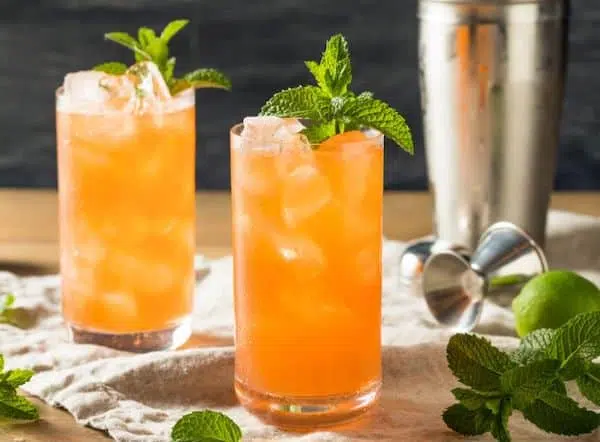
Donn Beach made a habit of keeping the recipes for his cocktails a secret. He sometimes even used cryptic references for some ingredients, so only he knew what exactly went into his shaker.
Luckily, there are curious and persistent people like Jeff Beachbum Berry. He published a book called Sippin' Safari, containing many recipes for Tiki cocktails.
Berry did quite some research for this, interviewing countless bartenders from Don the Beachcomber and many other famous Tiki places.
As a result, his gem of a book also shows the development of the Zombie cocktail over time as it contains three different recipes created between 1934 and 1956.
The original recipe contained the following: three different kinds of rum, lime juice, Angostura bitters, Falernum, Pernod, grenadine, and -of course- Donn's Mix. Our recipe also calls for the addition of pineapple juice.
Often it happens that somebody doesn't have all the necessary ingredients at hand, this drink has countless riffs and variations.
Amongst those are versions of bartending legends like Trader Vic, creator of the Mai Tai, and Jeff Beachbum Berry.
Trader Vic's Zombie Recipe calls for the following:
And for Zombie Cocktail made like Beachbum Berry, you need:
You can also find recipes using absinthe instead of Pernod, different rums, grapefruit juice, non-alcoholic falernum, etc., etc. What all have in common is that these are very, very boozy concoctions.

As you can see in our quick facts above, our Zombie recipe has an alcohol content of about 26%. The exact number depends on your choice of products, of course. That is high, but not nearly as much as you get in many vintage drinks. Here the ABV often surpasses 30%.
However, these vintage cocktails come in small doses so that your alcohol intake stays firmly below 30 grams. Not so for a Zombie. That is a long drink with a crazy 45 grams of pure alcohol per serving. For comparison, a Long Island Iced Tea has 24 grams.
Thus, this cocktail will very quickly make you drunk. We suggest you drink it slowly and responsibly.
Donn Beach invented the Zombie cocktail in the 1930s at his legendary bar - Don the Beachcomber. Beach served many rum-based drinks and kicked off what we know now as modern Tiki cocktail culture.
Apparently, Beach created this complex concoction with the purpose of curing a hangover, just like others did with the Corpse Reviver and the Suffering Bastard.
The story goes that Donn Beach mixed it for a hungover customer helping him to get through an important business meeting.
Obviously, Beach overdid it with the alcohol levels because his customer allegedly pointed out that the drink was so strong that he somehow felt like a Zombie. But at least it seems he managed to get through the meeting, even though probably not as well as he hoped.
Beach, too, was aware of how potent his creation was. Therefore, he limited the number of the cocktail, now called Zombie, to two per customer per day in his bar. He explained that one more would make you "like the walking dead."
What's also worth mentioning is that he used his legendary secret formula - the so-called Donn's Mix - to enrich the flavors of the Zombie cocktail. So let's look a little closer at the ingredients.
Donn's Mix is a syrup made with cinnamon and grapefruit juice that you can easily make at home. All you have to do is make a cinnamon-flavored simple syrup and then mix it with grapefruit juice:
Step 1: Use one cup of sugar, one cup of water, and three cinnamon sticks. Bring everything to a boil and stir until the sugar dissolves completely. Then remove from heat and let the syrup cool down.
Step 2: Now, you need to mix your cinnamon syrup with fresh grapefruit juice. For this, use one part syrup and two parts grapefruit juice.
Et voila, you just created Donn's Mix.
If you are looking for more crazy, tropical cocktails to serve for your next summer party or tiki fete, we recommend these:
To view the entire list, head to our overview of favorite Tiki Cocktails.
When the weather gets cold, coats, gloves, and scarves are out on the streets again. And often, they are not nearly enough to make one feel warm and cozy again. Then it's about time to warm yourself up from the inside. And what better way is there than doing this with something hot and slightly boozy?
Especially in the Northern hemisphere, where temperatures quickly drop way below 0°F, there's a considerable demand for such beverages. And a much-beloved one over there is Glögg.
First of all, it's probably a bit of a puzzle how to pronounce the "ö" sound correctly. It's pretty hard to find anything comparable, but the closest would probably be like the "e" in gherkin.
But now, what is Glögg? It's wine or Brandy spiced with many typical winter spices such as cinnamon, cloves, ginger, cardamom, star anise, dried fruit, and then some - depending on the individual taste. You can also get it with Rum or Vodka or as an alcohol-free version. Then the spirit base gets replaced by fruit or berry juice which, too, is warmed up and refined with the typical Glögg spices.
Many say it is just the Swedish word for mulled wine. And that certainly isn't wrong. Also, the name Glögg is short for glödgat vin: the Swedish word glögdat translates to glowing, so it literally means glowing wine. -Which is the literal translation for the name for mulled wine in many European countries. In Germany, for instance, it's Glühwein (Glüh = glowing; Wein = wine).
But each country has its own traditions with its national dishes and drinks. And therefore, of course, there are some differences between Glögg and hot wines from other regions.
One main difference between Glögg and other mulled wines is, traditionally almonds and raisins are placed at the bottom of a glass before the actual beverage gets poured.
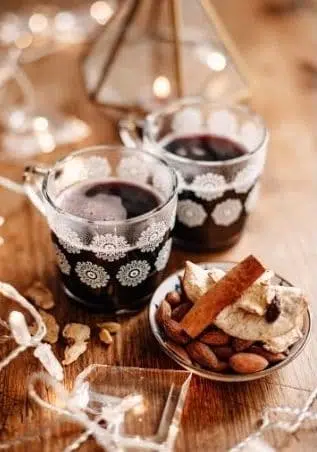
And then, another significant difference is, Nordic people are serious about their booze. Because, where most countries with a tradition of mulled wine stick to a wine-base and add some spices, the Scandinavian Glögg usually contains higher-proof spirits like Cognac or Vodka.
Of course, it is not uncommon to add schnaps or liqueurs like Amaretto to mulled wine in other regions, as well. But in those cases, it is more of an add-on you have to order extra. It is never the base for the whole thing.
And ultimately, there is a difference regarding the spices used for Glögg: Ingredients like cloves, cinnamon sticks, or star anise can be found in almost all mulled wines across Europe. But cardamom and fennel seeds are common only in Glögg but not in mulled wine from other regions. At least not when you look at traditional recipes. It has to be green cardamom - also known as true cardamom - not black or white.
Because, unlike other mulled wines, Glögg contains whole dried fruit and nuts, you serve it with a spoon. The little alcohol-infused bites are not just there for the fun of it. They are meant to be eaten.
Traditionally, Glögg gets served around Christmas in thick glass mugs with a handle. But as a matter of fact, you get it in all kinds of vessels during all winter months. The handle is a must, though, as it obviously is quite hot at the time of serving, and you don't want to burn your fingers.
Neither Sweden nor any other Scandinavian Country is particularly famous for their wines. And this is no surprise, as neither landscape nor climate is suitable for cultivating grapevines so far up in the North. So how can spiced, hot wine be such an important tradition? And one that goes back to the 16th century to the time of King Gustav Vasa and beyond?
According to Swedish historians -including Jan-Öjvind Swahn, a cultural history and professor emeritus of folkloristics- the absence of vineyards is, in fact, the reason for the importance of Glögg. Hundreds of years ago, transporting wine from South Europe all the way to Sweden resulted in a significant loss in quality. And to hide the quite substandard taste of their wine, it seemed only logical to add spices and herbs.
But this practice was no invention of the Swedes. Different sources date back the first occurrences of spiced wine as early as the 300s to ancient Greek. Later, in medieval Europe, it became common practice to heat spiced wine during the colder months.
The switch from hot wine to hot, spiced Schnapps - or Brandy- probably occurred during the 16th century. It was a popular variation among couriers and messengers who traveled through the snow on skis or horseback.
The first time that Glögg appeared in written form was allegedly around 1610, and it was then referred to as "Glödgat vin." I don't know exactly when the short form "Glögg" came up, but possibly it happened during the late 19th century. Because in the 1890s, Glögg evolved from a conventional hot drink to one of the most popular, typical Swedish Christmas traditions.
In the early 20th century, prohibition became a thing in the Nordic countries. That even was some ten years earlier than it got enforced in the United States. And it lasted longer, too. But when it finally was lifted, Glögg found its way across the borders and became popular in Finland, Norway, and also in Denmark.
Wine Glögg: Traditional Glögg with a red wine base. Usually at around 10% ABV.
Starkvinsglögg: Glögg made from a wine with a higher ABV. The alcohol level usually is around 15%.
Glögg with added alcohol: Glögg with a wine base and a high-proof spirit like Vodka, Rum, Cognac, etc. The total ABV is around 20%.
Flavored Glögg: During the past years, more and more variations popped, from apple to chocolate, there's a flavor for everybody.
Brännvin Glögg: Glögg with a brandy-only base and an ABV that must not be named.
For several years now, all the wine types are also available with white wine instead of red.
As we now established, spicing and heating up wine or spirits is more or less a logical consequence of having to deal with a low-quality product and cold weather. Therefore, it is hard to figure out who invented Glögg - mulled wine in general, for that matter.
But the word Glögg and the use of cardamom, fennel, and high-proof spirits like Aquavit or Brandy as a base most likely originates in Sweden. From there, it traveled to Finland, Norway, Denmark, and eventually to the Baltic countries.
All of (extended) Scandinavia stuck to the Swedish traditions of preparing Glögg and also adopted the name: It's Gløgg in Norway and Denmark. Or Glögi in Finland and Estland. Icelanders go with the original spelling of Glögg. And for everybody else, it's perfectly alright to refer to it as Glogg and save yourself the trouble of searching for the correct linguistic symbols.
Making Glögg is actually pretty easy and a lot of fun. Plus, your whole apartment will smell like Christmas for at least a day after you are done with preparations. I love the smell of Glögg and all the other mulled wine variations, so this is a bit of an extra for me. If you're not such a big fan, keep the kitchen door closed and the extractor fan on full blast.
Obviously, there is more than one way to make Glögg at home as there are already different options for the base. I prefer my Glögg with a mix of high-proof spirit and wine base, and that is also the version I decided to put here.
All you need besides the ingredients below is a jar, two large pots, a cooking spoon, and a strainer.
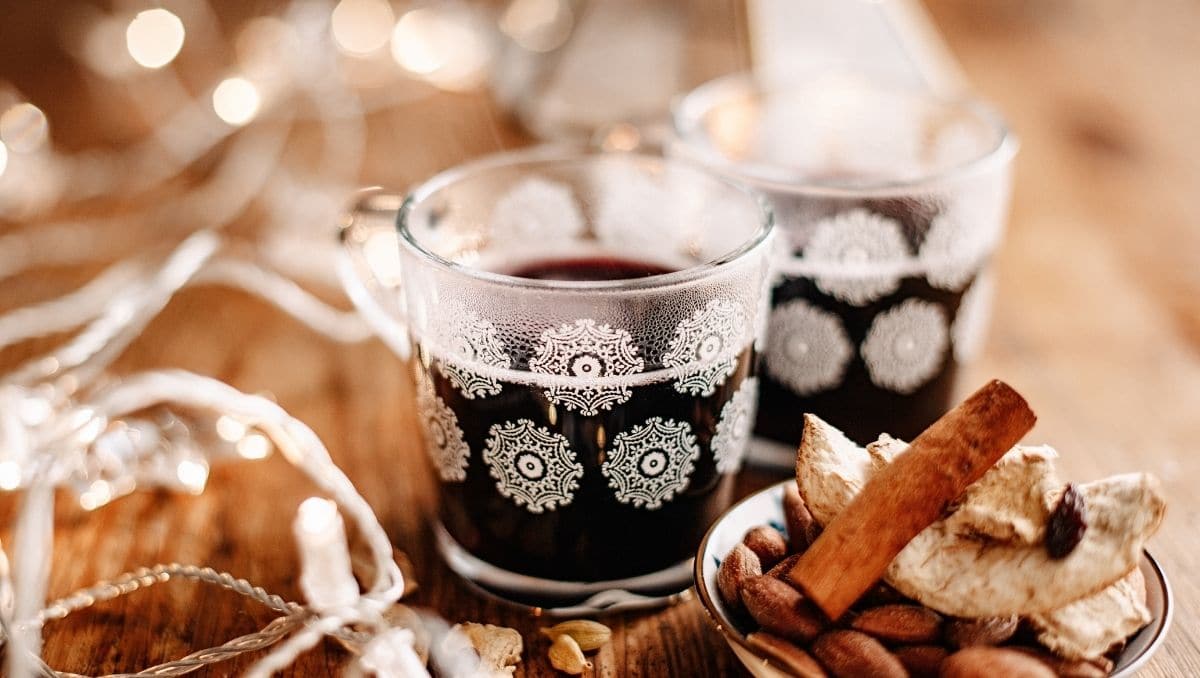
Wintertime is mulled-wine-time - there is no way around it. And Glögg is a fantastic variation of this Christmas classic. So get out a saucepan, spirit and wine, and the Christmas spices from the back of your rack and make some nice Glogg at home. In case you prefer your drinks cold you don't need to miss out on those beautiful winter spices. Give it a try and make our Christmas Rum Sour. Cheers
The Tommy's Margarita follows a slightly different approach than the original and calls for only three ingredients: Tequila, lime, and syrup.
Omitting the orange liqueur first sparked a debate about whether or not the drink deserves the name Margarita. Yet, as soon as the IBA recognized and classified it as a New Era Drink, discussions calmed down.
Quick Facts Tommy's Margarita
Read who invented this simplified version of the classic Mexican drink, and learn how to make it at home and to perfection.
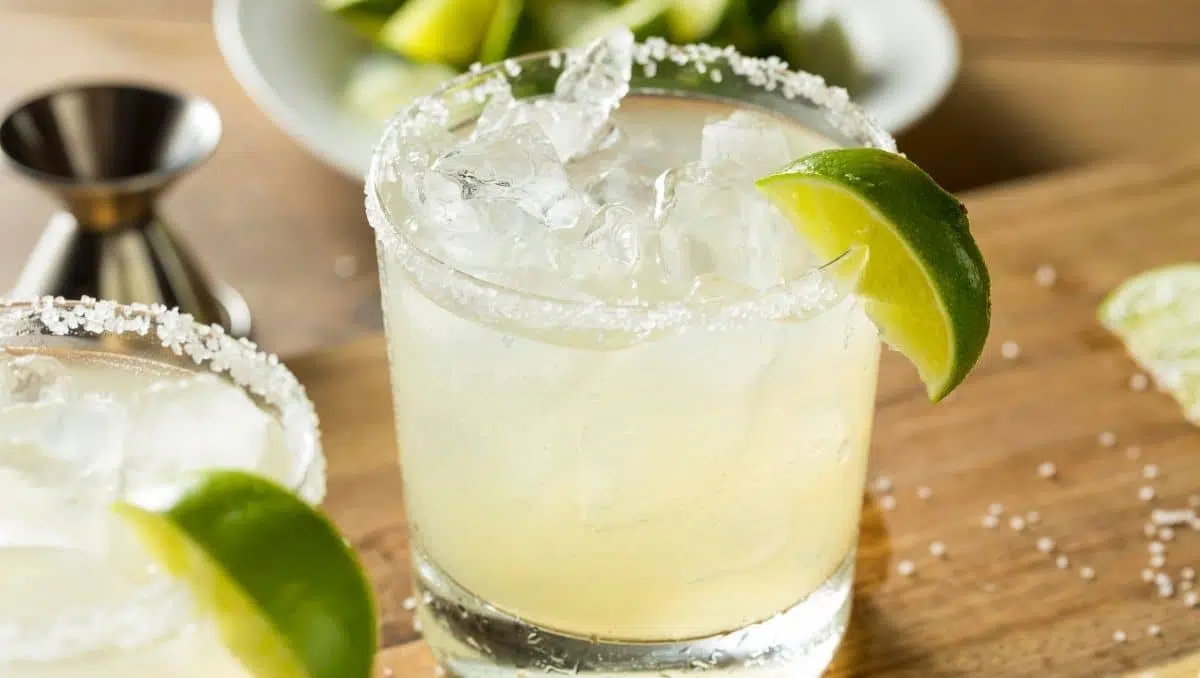
Pretty similar to the original, it's about the details when making this tequila cocktail:
A Tommy's Margarita has a much more pronounced agave taste than the citrus-forward original version. That also means using fresh lime juice is even more important here.
We like to age our lime juice, which means, we squeeze it 2 to 3 hours before mixing the drinks. This aging time reduces the bitter notes and smoothens the sour bite while maintaining the natural, fresh zesty taste.
Shake this drink for at least 15 seconds, and make sure to use plenty of ice for the process. The tequila has center stage, and you want your drink ice cold. - Also, be generous with the ice when serving Tommy's Margarita.
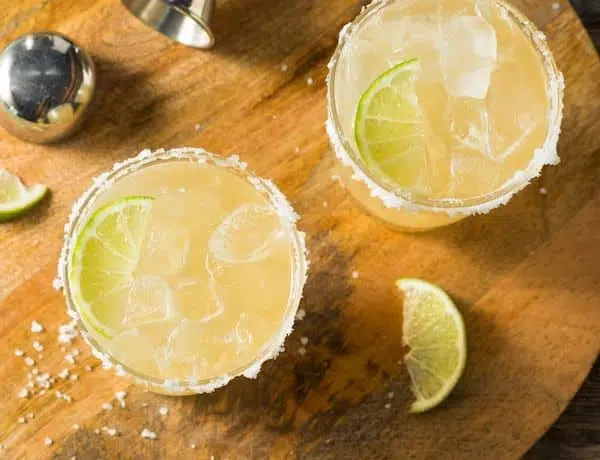
Although the name suggests that the drink got invented by a "Tommy", it was, in fact, not. The inventor of the cocktail is Julio Bermejo. He created the simplified version of a Margarita in the 1990s while working at his parent's restaurant Tommy's.
The restaurant is located in San Francisco and is famous for its enormous selection of agave spirits. So if you happen to be in the area and are into tequila or mezcal, this place is an absolute must.
When Julio Bermejo discovered agave nectar, he was intrigued as the ingredient was not very common in those days. He experimented a bit and came up with a Margarita recipe that solely works with the sweetness of agave nectar. No additional sugar, no orange liqueur.
Agave syrup was way more expensive than combining syrup and orange liqueur, but Bermejo just loved the result.
You are up for more variations of the Mexican favorite? Grab your shaker and mix up some of these creative takes on the Margarita:
When looking at today's recipe for a French 75, a lot has changed since the original drink got invented. During World War I, Harry MacElhone created the cocktail, and it was so boozy that people compared it to the fast-firing field gun the French used in battle, a 75mm caliber.
Yet, when looking at today's recipe, it's hard to believe that the cocktail once had such a kick. That tells us that, in the early days of the drink, the ingredients must have been quite different.
Read on to find out more about the French 75's history.
The modern recipe is less complex than the original one and calls for Gin, Champagne, lemon juice, and sugar.
And let me tell you first, freshly squeezed lemon juice is an absolute must. Otherwise, your whole drink will fall flat.
When it comes to the sweet component, some prefer a rich simple syrup - a ratio of 2:1, sugar to water. But you won't taste a huge difference to regular simple syrup as the recipe asks only for a tiny bit of sugar. So you can go with that, as well.
Then there is Champagne, quite a delicate and luxurious ingredient. For the French 75, it is best to go with a Brut Champagne.
Moet works fine, but my personal favorite is Louis Roederer Brut Champagne. In that price range, I don't think you can find anything with a similar value for money, Moet included.
Finally, let's talk about Gin. The cocktail is a true classic, so I recommend using a standard Dry Gin.
If you want, you can also experiment and try a London Dry. Or you opt for another type of Gin altogether and test how that turns out. -As I said, though, I prefer to keep it classic for the French 75. You can always mix your modern Gins into another beautiful Gin Cocktail.
As I mentioned, Harry MacElhone created the early version of the French 75 during World War I. Most likely around 1915.
He composed the cocktail in his bar in Paris called Harry's New York Bar. And he must have been in quite a state when he felt like creating a concoction that was so strong that it made people think of the French fast-firing field gun.
In his original formula, MacElhone used Calvados, Gin, Grenadine, and Absinthe. This recipe was first published in 1922 when he released his renowned book, Harry's ABC of Mixing Cocktails.
Later that year, the cocktail recipe also was published in another book by Robert Vermeire. In his version, Vermeire gives credit to Harry MacElhone for inventing the drink but adds lime juice to better balance the flavors.
Again, a few years later, in 1927, one Mr. Judge Jr. made some more significant changes to the recipe and published it in his book Here's How. It was Judge Jr. who came up with the list of ingredients that have prevailed until today - Gin, Champagne, sugar, and lemon juice.
The fact that the French 75 also got published in The Savoy Cocktail Book, one of the most famous cocktail books in history, helped popularize the drink further.
Appearances in movies also familiarized people with this elegant Champagne cocktail and made it known to the broad masses. References in Casablanca and A Man Betrayed quite possibly had the highest impact.
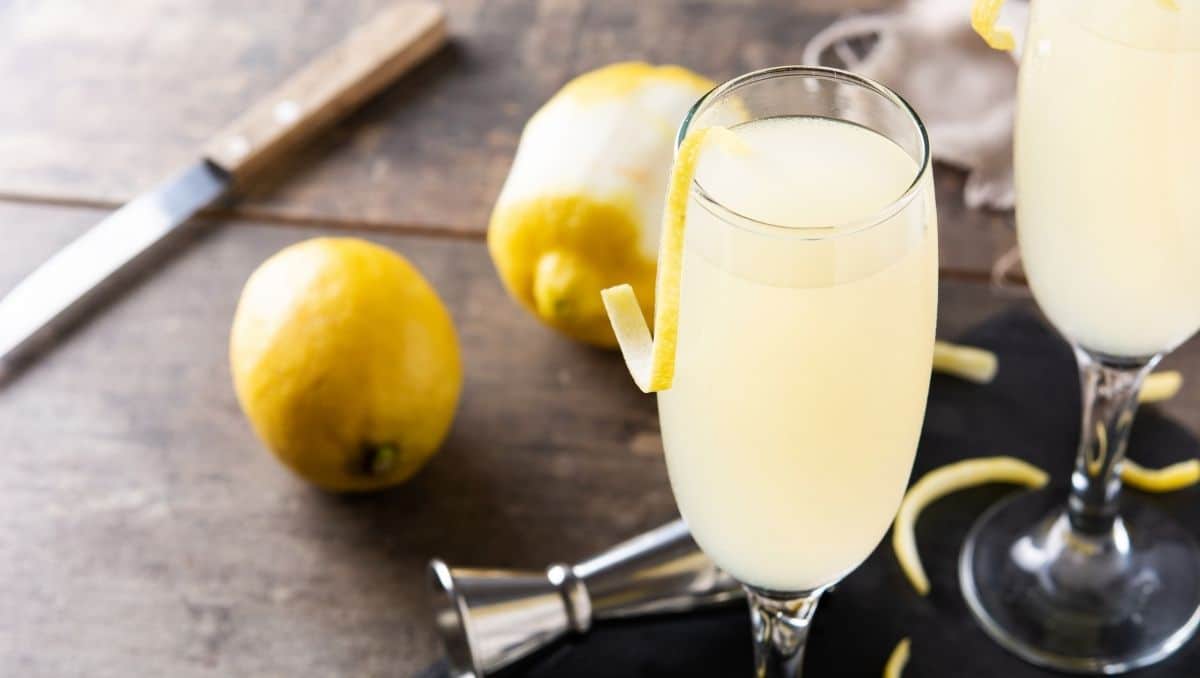
Inspired by a true cocktail classic, the Paper Plane Cocktail is a relatively modern cocktail recipe. It is a whiskey-friendly twist on the Last Word - and the name is just as avant-garde.
The beautiful red and pink-hued Paper Plane has a unique and well-balanced taste: bittersweet with intense notes of Bourbon and a pinch of zestiness.
The drink's unusual name goes back to a summer hit from M.I.A. with the same title. Paper Plan Cocktail inventor Sam Ross once stated that this song "was blasting on repeat the whole summer we worked on the drink."
According to the inventor, Sam Ross, you should opt for Bourbon with an ABV slightly above average when making a Paper Plane Cocktail. Anything in the range of 43% - 46% vol. (or 86 - 92 proof) will work fine.
The reason for using such a strong base is simple: more taste and body for the resulting drink.
These days, the two standard Amaros used in the drink are mostly Amaro Nonino Quintessentia and Aperol. But in the original version, served in The Violet Hour, Ross used Campari.
However, to pull back on the bitterness, he went with Aperol when he brought the drink to New York.
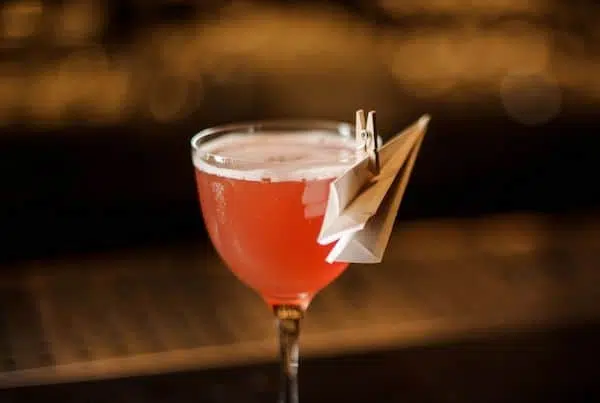
Probably, it had been this minor change in the recipe that kicked off the success of the cocktail.
Aperol and Amaro Nonino bring a perfectly balanced sweetening element to the drink that carries just the right level of bitterness. Instead of Amaro Nonino, you could use one of these Amaro Nonino substitutes.
For the sour part, best use freshly squeezed lemon juice to get that tangy notes in your drink. Better refrain from using store-bought juice because the result will be far from how good it could be.
To round off the drink, you can add a small plane made of paper to the cocktail glass. This iconic little garnish occurs in cocktail bars everywhere and adds a playful touch to this delicious drink.

Thinking about the Paper Plane, you might get the idea that this drink has a long history. You also will have a hard time finding a bartender who doesn't know this drink, and you get the cocktail in almost all cocktail bars in the US.
So, surely it has to have been around for at least decades, right? Well, one decade, yes, but that's it.
Sam Ross, a bar owner and bartender from New York City, invented this pretty and delightful drink in 2007. Not quite so long ago, I'd say.
Sam Ross is usually mixing drinks in New York City. However, he created the Paper Plane cocktail recipe specifically for a bar in Chicago.
He was part of the crew that mixed drinks at the opening of The Violet Hour bar in the Windy City. And the cocktail somehow became the star among all drinks served.
Garnished with a tiny plane made of paper, the whole concept of the Paper Plane is just perfectly thought-through.
The success during the opening led Ross to take his creation back with him to New York City. And after serving it for a while at the Milk & Honey bar, the Paper Plane quickly became a crowd favorite there, too.
As mentioned above, the Paper Plane Cocktail is a riff on the classic cocktail recipe for the Last Word. Yet, at first sight, both drinks don't look too similar.
The components for making the Last Word are Gin, lime, Maraschino Liqueur, and Green Chartreuse. As opposed to the Paper Plane recipe, where you find Bourbon, fresh lemon juice, Italian Amaro, and Aperol on the ingredient list.

Instead, it is the general template of the drinks that is similar:
Both usually contain equal parts of each ingredient: a mix of spirit, citrus juice, and two additional liqueurs or Amaros to sweeten the drink.
It's a perfect example of how a riff on a cocktail can successfully evolve into something completely different.
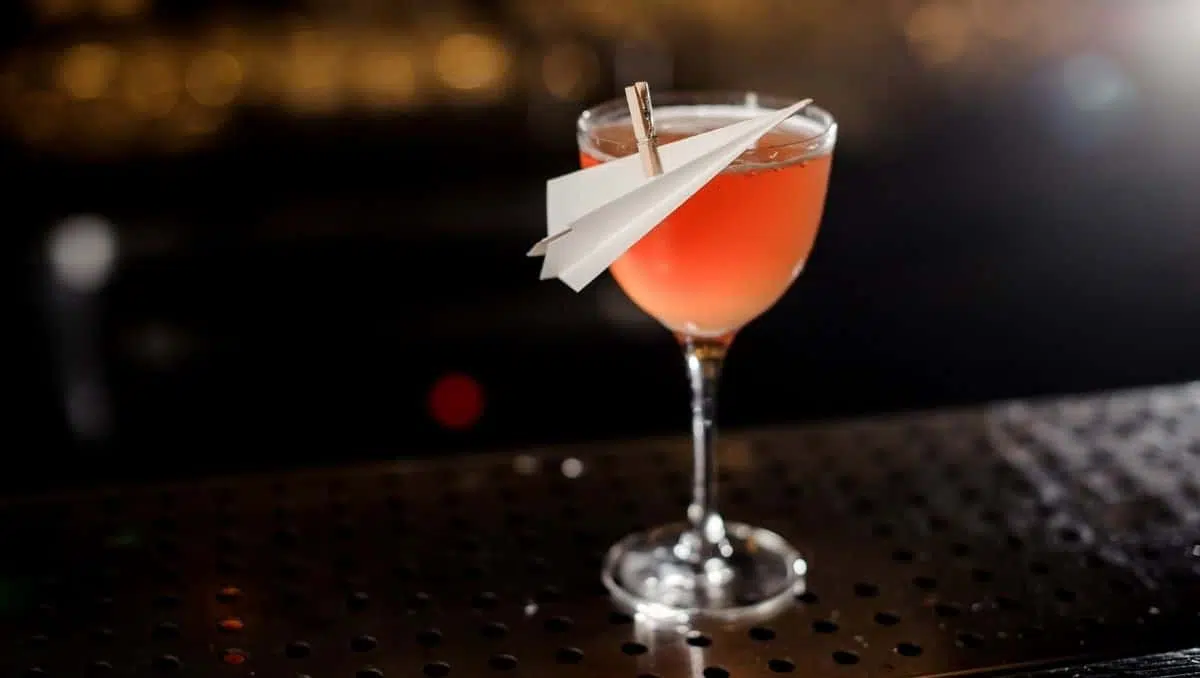
Ernest Hemingway is a household name. And that does not only concern his talent in writing novels. His name also comes up regularly when talking about liquor and cocktails.
Hemingway rarely turned down a drink. So it's not surprising that while living in Havana, Ernest Hemingway had quite a few Daiquiris.
And one day, when he visited one of his favorite bars, a special version of the drink was born - the Hemingway Daiquiri.

Besides Rum, lime, and sugar syrup, the unusual recipe features grapefruit juice and Maraschino liqueur. That, at first, may seem strange. But knowing Hemingway and his passion for bone dry drinks, the formula certainly does make sense.
Find out more about this intriguing story and why you should adjust the original recipe to enjoy Hemingway's creation best.
During his time in Havana, Ernest Hemingway made quite some friends in the capital of Cuba. He also had a couple of favorite bars where he would enjoy himself.
One of them is Bodeguita del Medio, a well-known bar in central Havana, still open these days. And the other isn't any less famous - El Floridita.
The bar, sometimes also called La Floridita, plays a vital part in cocktail history. If you ever have the chance to visit this gem, do not hesitate.
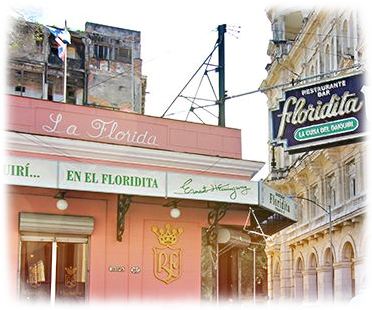
Of course, as you can imagine, the bar has become a pretty touristy place in the past decades. However, nonetheless, it is still full of history. And it was there that the Hemingway Daiquiri got created for the very first time.
The story goes that Hemingway was wandering around in search of a toilet.
When he entered El Floridita to relieve himself, he couldn't turn down the opportunity to have a drink. He tried their popular frozen Daiquiri and replied:
"That's good, but I prefer it with no sugar and double the Rum."
Ernest Hemingway
And so, the original version of the Hemingway Daiquiri was born.
The head barkeeper Constantino Ribalaigua Vert mixed it for him. It was literally a Daiquiri without sugar but double the amount of Rum. Or let me translate that into "a lot of Rum with a splash of lime juice".
Hemingway certainly loved his drinks boozy. But you might wonder, why didn't he want sugar in them?
The answer is quite simple: Hemingway, like his father, suffered from Haemochromatosis. A disease that ultimately can lead to diabetes.
Sometime later, a new head barkeeper of the El Floridita, Antonia Meilan, changed the recipe by introducing Maraschino liqueur and grapefruit juice to the drink.
That created a way better-balanced drink compared to what Hemingway ordered in the first place. Today, most drinkers also prefer to include a bit of simple syrup to get a balance right.
I don't really recommend trying the original version of the drink, using only Rum and lime juice. That's only for legends like Hemingway 😉
Even the evolved recipe, which uses Maraschino liqueur and grapefruit juice, is not for everybody unless you prefer dry drinks. -It doesn't even help to choose the best Rum for the drink.
But palates are different, and if you want to give this traditional recipe a try, here it is - received directly from El Floridita:
TRADITIONAL HEMINGWAY DAIQUIRI RECIPE:
3 oz White Cuban Rum
1 oz Grapefruit juice
0.5 oz Lime juice
1 bsp Maraschino liqueur
For making the traditional version, all ingredients are mixed with crushed ice.
If you are like me and many others, this version will still be a bit too dry. Therefore, by adding just half an ounce of simple syrup, you can balance the drink and receive a way better flavor profile.
So if you ask me, go with the more modern interpretation of a Papa Doble.
I already introduced quite a few different names for the drink: Hemingway Special, Hemingway Daiquiri, Papa Doble, and sometimes it also gets called "El Floridita #4".
While most of the above are self-explanatory, Papa Doble is a bit of a mystery. But there's a good story about how this name was born.

I mentioned earlier that Hemingway was a welcome guest that made quite some friends in Havana.
At one point, Cubans lovingly started calling him Papa, and his cocktail initially got the name "Daiquiri like Papa". A Daiquiri made just the way Ernest liked it.
Over the years, the name changed to Papa Doble, referring to the double amount of Rum in the drink. -An adjustment that makes much sense, to be honest.
Another few years later, after Antonia Meilan adjusted the recipe and added Maraschino & grapefruit, the drink was renamed again. It was now known as Hemingway Special or Hemingway Daiquiri.
I don't know about you, but I prefer Papa Doble. This name just carries the whole story so nicely. And is a more elegant reference compared to Hemingway Daiquiri.
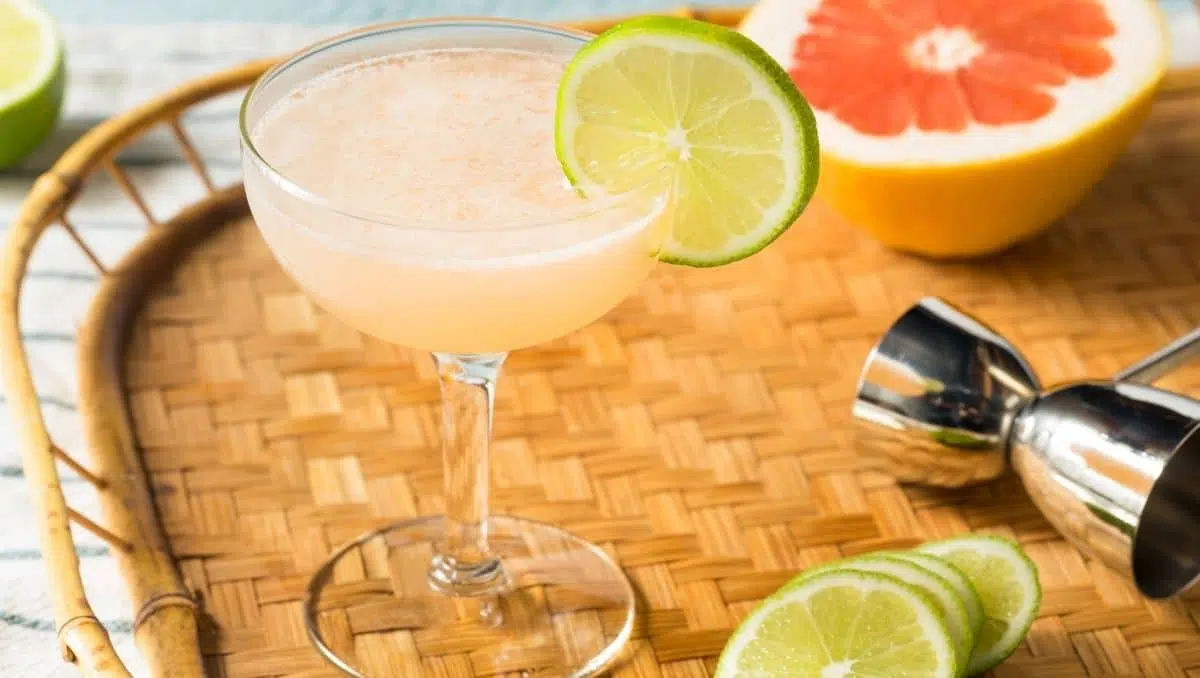
The Cosmopolitan Cocktail or "Cosmo" became world-famous thanks to the cult series "Sex and the City". The cranberry-flavored sip was the favorite of Carrie Bradshaw, the main character.
It didn't take long to gain traction outside the TV show. Regardless of whether you were or weren't a fan - there was no getting away from the Cosmopolitan Cocktail. No bartending shift was complete without preparing dozens for thirsty customers.
Quick Facts Cosmopolitan Cocktail
During its peak in popularity, you could find countless riffs on the classic Cosmopolitan recipe. Today, the massive hype has faded, yet, the drink still is a staple on bar menus.

You need no more than four ingredients to make a fantastic Cosmopolitan Cocktail:
Being a Martini-type drink, the Cosmo usually comes straight up in a stemmed glass. To make it perfect, follow these simple steps:
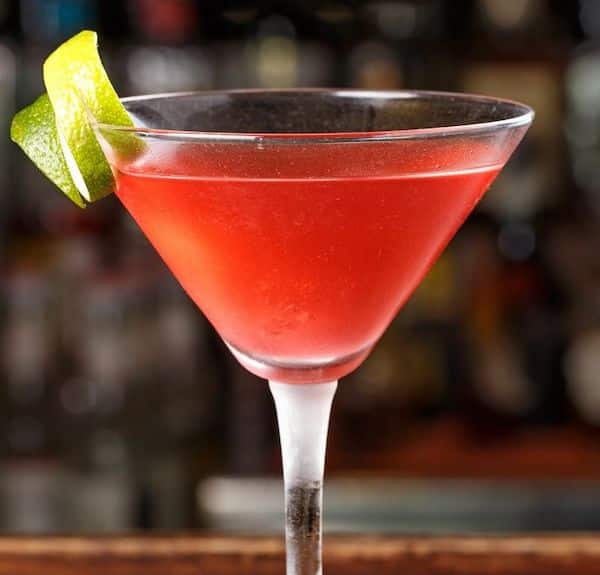
The Cosmo first popped up sometime in the mid to late 80s. Who invented it is not 100% certain, though. Most sources credit one of three different bartenders as possible inventors of this 90s classic:
Number one is Dale DeGroff according to New York Magazine. They once claimed he created the first Cosmopolitan during his tenure at the bar Rainbow Room in NYC.
Others name NYC bartender Toby Cecchini with the invention of the cranberry-based recipe. Even if he wasn't, Cecchini for sure was one of the accelerators of the cocktail's success.
Finally, according to legendary barkeeper Gary Regan, the initial creator was someone else entirely. Gary Regan was a true master of mixology and had a column in the San Francisco Chronicle. According to him, bartender Cheryl Cook made the first version of the cocktail in 1985 in Miami South Beach, served in a Martini glass.
The latter two found further support in the early 2000s when Dale DeGroff himself stated he definitely did not invent the Cosmopolitan. But he admitted that he sees himself as one of the key actors:
What I did do was popularize a definitive recipe that became widely accepted as the standard.
Dale DeGroff, "The Craft of the Cocktail" (2002)
Either way, the cocktail had everything a drink needed in this era. Vodka cocktails were everywhere, and incorporating cranberry juice in cocktails has never been as popular as it used to be in the 90s.
If you want some inspiration on how else to make use of the ingredients you got for this Cosmopolitan Cocktail recipe, here are some ideas:
The Paloma Cocktail is a sensational summer drink. It's light & refreshing, and it can absolutely keep up with the Margarita, at least if you can handle a bit of fruity bitterness. -This refreshing and palatable cooler has some serious grapefruit notes, which beautifully complement the clear, crisp tequila and lime.
Quick Facts Paloma Cocktail
Read on to find out when the Paloma got invented and how to make the best version of this bright and refreshing tequila cocktail at home.
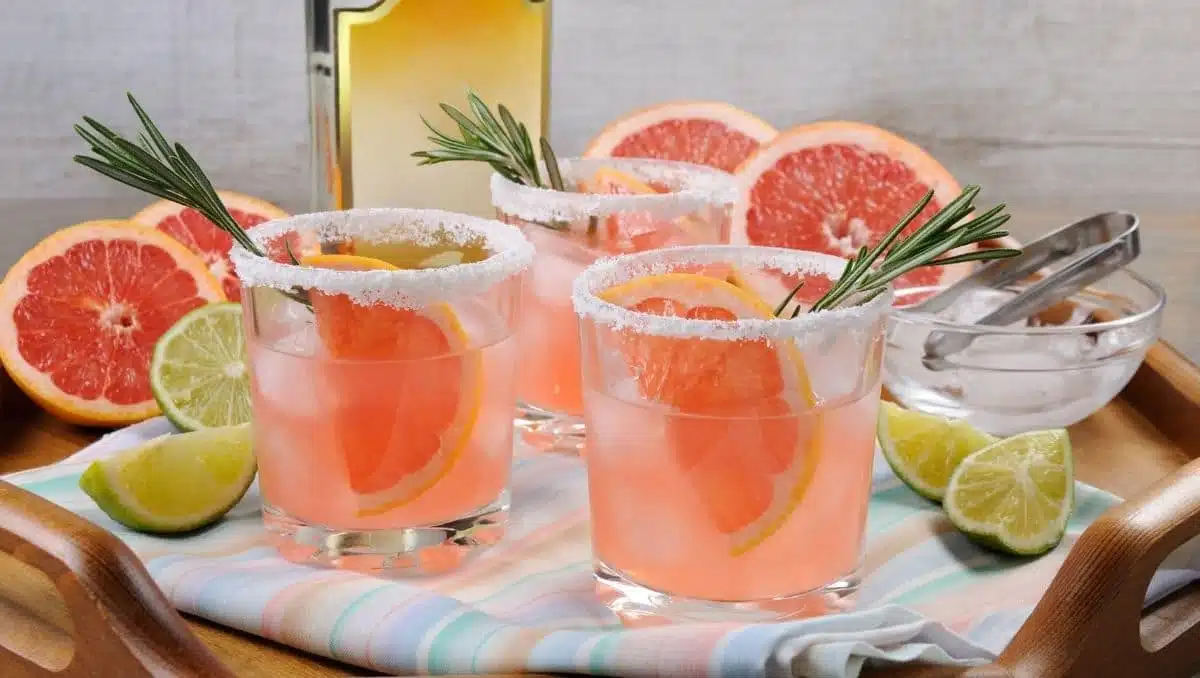
The Paloma is made of tequila, grapefruit soda, fresh grapefruit, agave syrup, and lime juice. With a bit of attention to detail, you get a truly sensational drink:
Best Tequila for the Paloma: If you're familiar with the Agave spirit, you know there are different types of tequila. Traditionally a Paloma is made with Blanco Tequila, which is also our recommendation for a proper Paloma.
The spirit has to cut through many tart and sour ingredients, and it needs that crisp bite. Aged tequila, like Anejo and Extra Anejo, is too soft and mild, they would get lost in the mix. -And that would also be a waste of money.
Another good option is a Reposado, a shortly-aged tequila, still quite crisp and affordable.
Grapefruit: Grapefruit is the second crucial element in a Paloma. We need two different components here: grapefruit juice and sparkling grapefruit soda.
Make sure to use freshly squeezed grapefruit juice to get beautiful and complex grapefruit notes into the cocktail. Bottled juices from the supermarket will never live up to the taste of fresh, natural citrus fruits.
The pink grapefruit soda helps to balance out all ingredients. Our favorite for the Paloma Cocktail is the Fever Tree sparkling grapefruit soda. The balance of bitter and sweet is perfect, and it delivers on the grapefruit flavor.
Lime juice: For the perfect Paloma Cocktail, use freshly squeezed juice from ripe limes. We recommend squeezing them shortly before mixing the drink to maintain its acidic bite. So, don't let it sit and age for too long.
If you are confused about the terms aged and fresh - both are made from fresh limes. The difference is the timing. To learn more about this, read our guide to lime juice in cocktails.
Agave Syrup: Adding a bit of Agave syrup will balance the drink. The slight sweetness is necessary to counter the bitter elements. It emphasizes the Agave notes from the tequila in the Paloma.
The classic combination of tequila and salt is optional but also works a treat with the Paloma cocktail. Thus, we really recommend making the effort.
Sea salt or Fleur de Sel will make a sublime salt rim. The taste is not harsh as it would be when using regular table salt. It's more refined and not overpowering.
Apart from sticking to using fresh quality ingredients, you should keep these things in mind when you want to make a sensational Paloma Cocktail:

The Paloma, itself a variation of the Margarita Cocktail, has brought forth various riffs and twists. Some of the most popular and best-known ones are the Monte Paloma, which incorporates Amaro Montenegro.
Or, if you like a smoky twist on the Paloma, try it with Mezcal in a Mezcal Paloma or even in a Frozen Mezcal Paloma.
Little do we know about the history of one of the most famous cocktails in Mexico, the Paloma. But at least the majority of sources agree on the time of the first creation of this cocktail.
Most suggest that the birth of the drink is in the 1950s. Some sources are more specific and claim the owner of the bar "La Capilla" Don Javier Delgado Corona invented the drink. La Capilla literally translates to "the chapel" and is a popular bar located in Tequila, Mexico.
Also, there have been many different ways to make this drink: From a two-ingredient approach using only tequila and grapefruit soda ("Simple Paloma") to more complex recipes using a variety of fresh ingredients and sometimes even a pinch of salt.
If you have some spare grapefruit and want to try some other drinks made with the pink, bittersweet fruit, you could mix:
The Last Word became a trending drink around Seattle in the mid to late 2000s. The reason for this was bartender Murray Stenson, who added the cocktail to the bar menu of Zig Zag café in Seattle Downtown.
The high-proof drink became an instant success, and within no time, bars everywhere around Seattle and Portland put the chic gin cocktail on their menus.
The Last Word is a lot older, though, and one of the vintage cocktails that were forgotten over time. Read on to learn more about the drink's history and how to make it the right way.
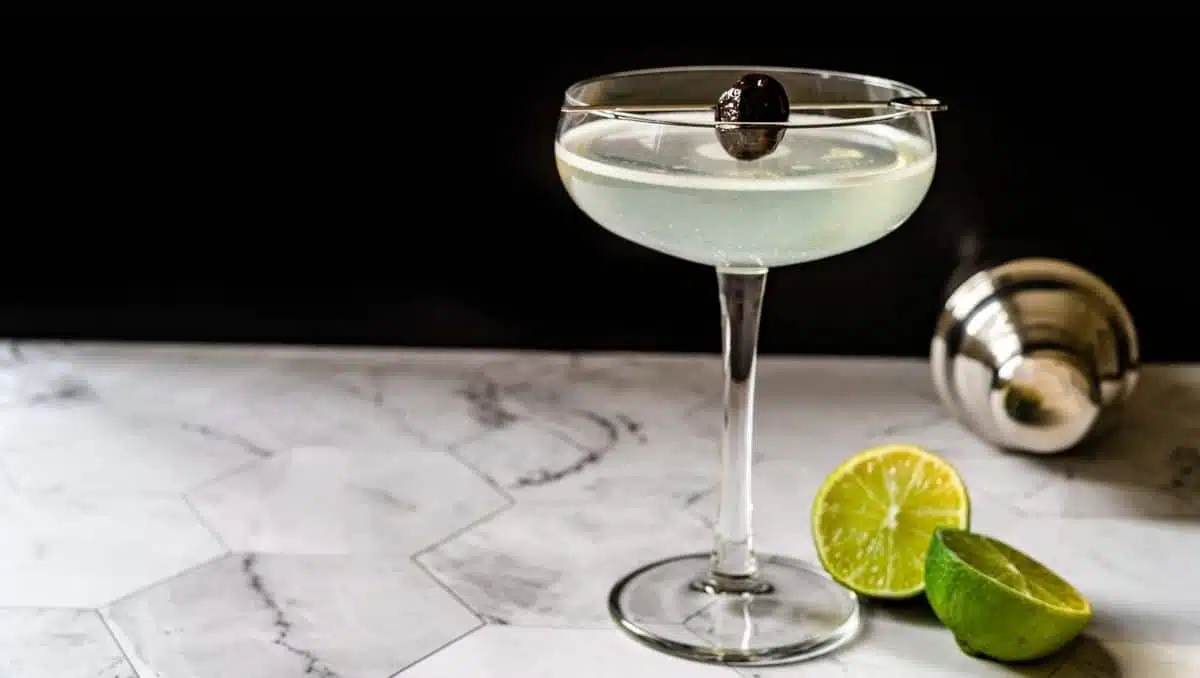
The Last Word cocktail is a classic drink with four ingredients classified as one of the Unforgettables by the IBA. The IBA calls for equal parts of all four elements. However, I prefer the more traditional version and put a little more emphasis on the Gin part:
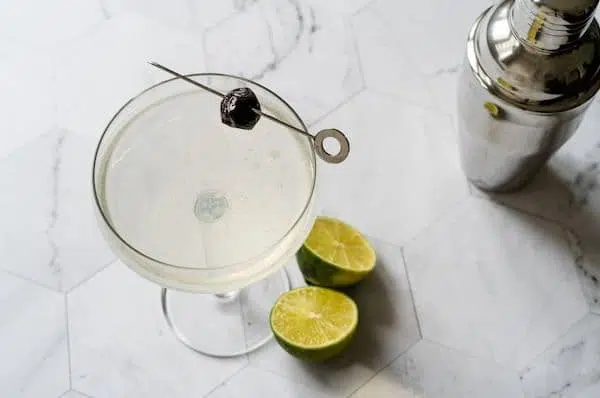
Of the many types of gin, I recommend opting for a classic Dry or London Dry Gin. Beefeater, for example. The taste of the Last Word highly depends on the choice of gin, so it's vital that you use a quality spirit.
In the drinks early days, a homemade Bathtub Gin usually went in. -At the Detroit Athletic Club, the birthplace of the recipe, they still use a homemade re-creation of the original Bathtub Gin, although surely one of better quality.
But don't worry, you don't have to mix up your own gin to make this drink work. Although, with this recipe, it does not hurt to experiment.
Palates are different, and by trying different Gins in the Last Word, you will realize just how delightful the cocktail actually is. It always feels well-balanced and always nicely reflects the base ingredient.
The beauty of the original Last Word recipe is that, apart from the gin, all parts are equally measured. That makes preparing this drink super easy.
In modern recipes, you can even find an all-equal measure approach. However, in my opinion, those versions are slightly underpowered in the gin department.
By pronouncing the gin part, the drink becomes this beautiful and perfectly balanced cocktail. Audrey Saunders, the famous bartender who invented the Old Cuban Cocktail, describes it as follows:
"I love the sharp, pungent drinks, and this has a good bite. It's a great palate cleanser. And it's perfectly balanced: A little sour, a little sweet, a little pungent."
Audrey Saunders

The most obvious variation is to apply said equal measures approach. In this case, you just use 0.75 oz of the four ingredients in our recipes.
Replacing the Last Word's base spirit with something else is another great way to create a riff. I suggest trying a mezcal-based version or one based on Rum or Rhum Agricole.
Creating more experimental riffs on classic recipes is common practice among bartenders. You can, for instance, try the Paper Plane cocktail, an established variation following the template of the Last Word but asking for very different ingredients. - Aperol, bourbon, lemon juice, and Nonino, either in equal parts or you can consider emphazising the bourbon.
In 2004, when bartender Murray Stenson - one of the best mixologists in the US- looked for a new cocktail for the menu of his Zig Zag café in Seattle, he checked Ted Saucier's cocktail book Bottoms Up.
Instantly intrigued by the Last Word recipe, Stenson decided to put the cocktail on the menu of the bar.
Saucier's book was published more than 50 years before, back in 1951. And although that is the first time the drink got mentioned in a cocktail book, the recipe is even older.
The Last Word is a prohibition-era cocktail. Probably, one Mr. Frank Fogarty invented it at the Detroit Athletic Club around 1920. And Fogarty really did a brilliant job because he developed the cocktail during prohibition when spirits were hard to get hold of.
The original recipe called for the so-called Bathtub Gin. A homemade type, commonly produced by infusing vodka with various herbs and botanicals. And when made in larger batches, the vodka-herb-mix was often installed in a bathtub - hence the name.
The Dark 'n' Stormy is a spicy, layered rum cocktail and most likely an invention of the Navy. It's supposed to resemble a dark, dangerous cloud looming over the sea.
The dark, aged rum brings an intense and distinct note to the Tiki cocktail, which -at 11%ABV- is not as potent as the name suggests.
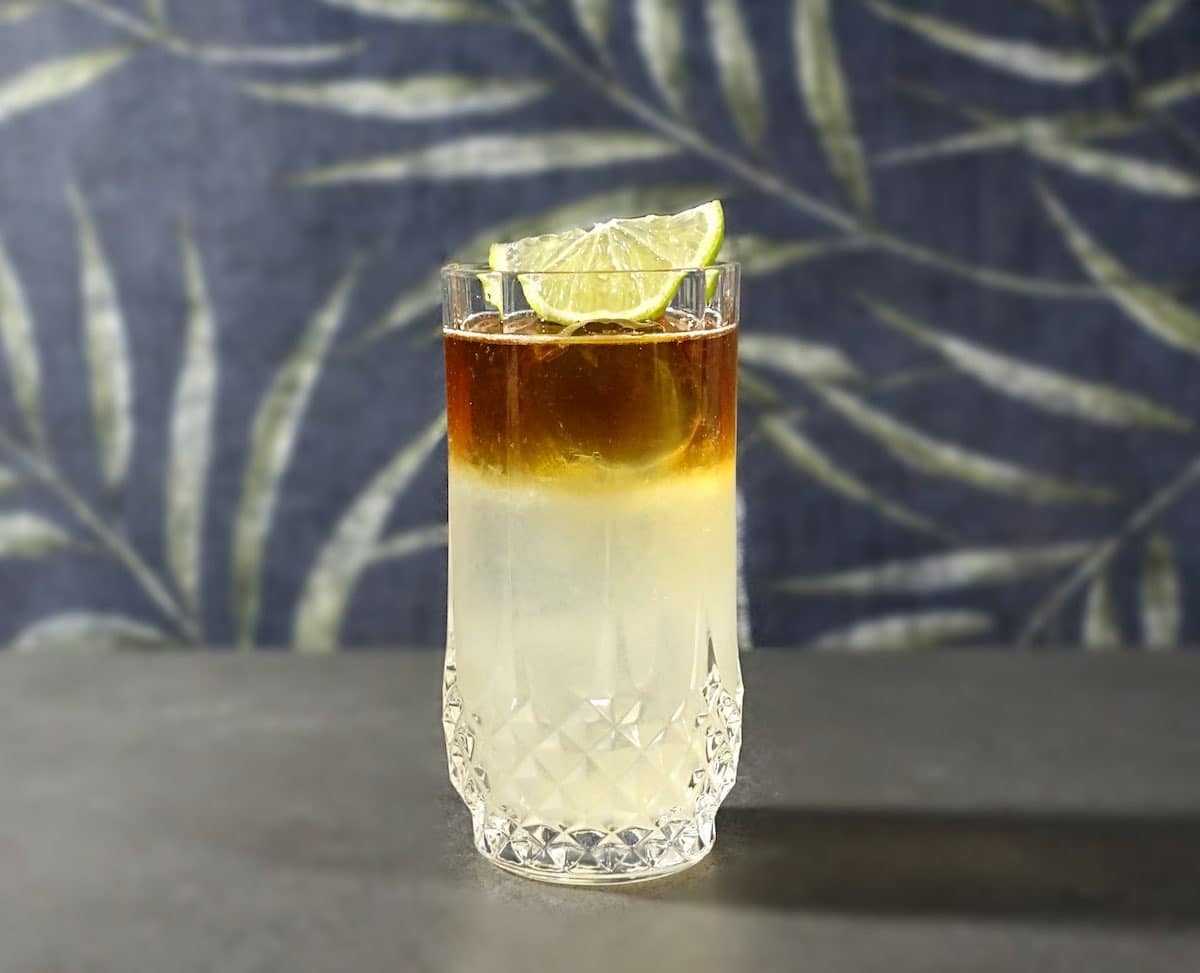
The Dark 'n' Stormy is a beautiful mix of rum, lime, and ginger beer. Here is all you need for the drink, with our recommendations and favorites:
To get the layered look of your drink right, you have to add all ingredients in the right order. Add ice to the glass first, then pour the ginger beer and the lime and stir with a bar spoon. -Gently, though, to keep the carbonation in the beer.
Only then can you add the rum to the glass. Don't pour it in straight from your jigger. Use the back of your bar spoon to help keep the rum afloat.
Hold the spoon as close to the ginger beer-lime mix as possible and your jigger close to the rim of the glass. Now, pour slowly, and you will see that the rum stays on top and doesn't mix with the other ingredients.
First and foremost, make sure that you use ginger beer and not ginger ale. Ginger Ale is sweeter and only flavored with ginger, whereas actual ginger beer is brewed and fermented with ginger. Therefore, the beer version is a lot spicier. -Don't get confused by the term beer. Ginger beer is non-alcoholic.
Serve your Dark n Stormy with a long drink stirrer or a biodegradable or reusable straw. People rarely drink this cocktail the way it is served. Usually, they might want to stir it up to mix the rum with the ginger beer.
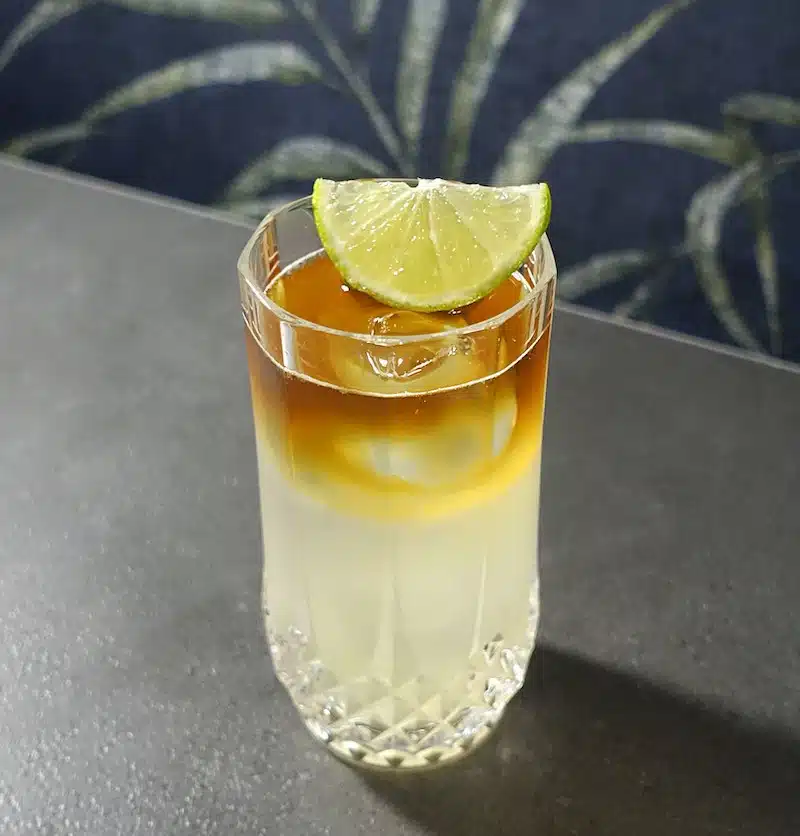
In Bermuda, the probable home of the Dark & Stormy Cocktail, you usually get a mix of ginger beer and rum without juice. Instead, you get a lime wedge on the side. That way, you can squeeze lime juice into your drink if you like, and if you don't, you don't.
Despite the lack of proper documentation, Bermuda is accepted as the official home of the cocktail. And that certainly makes sense.
Even though the drink's history is not documented all the way to its beginnings, most likely, it got invented by sailors - quite similar to other famous cocktails like the Gin and Tonic or the Navy Grog.
Bermuda is not only famous for rum but also for producing ginger beer. So it does stand to reason that someone from the island in the North Atlantic Ocean first created the drink.
But the main reason why Bermuda is the official home is due to the rum company Goslings. -And that tale does not go back quite so long.
Goslings in Bermuda has been producing rum since the very early 1800s. So, it's a company with a long tradition. However, only in 1991 did Goslings Rum successfully register a trademark for the Dark'n'Stormy Cocktail.
Since then, each drink that goes over a bar counter by the name Dark 'n' Stormy must be made with Goslings Black Seal Rum. And Goslings is serious about that! They enforced their rights and sued multiple other brands for promoting the drink with another rum as the base.
So, for 30-odd years, there's literally only one possible solution to legally name a cocktail Dark 'n' Stormy, and that is to use Goslings. Luckily, as a home bartender, you don't need to worry about such formalities.
One drink that gets mentioned frequently in connection with the Dark & Stormy recipe is the Moscow Mule - a blend of ginger beer and vodka. However, as a Caribbean rum cocktail, this drink is part of modern tiki culture, and you might want to serve it along with other tropical creations like
You can find more inspiration in our list featuring the top 20 Tiki Cocktails.